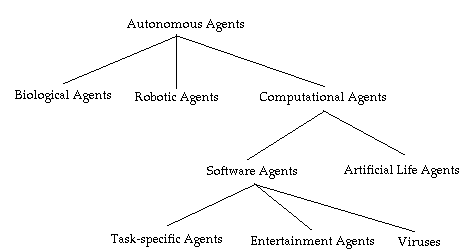| Property | Other Names | Meaning |
| reactive | (sensing and acting) | responds in a timely
fashion to changes in the environment |
| autonomous | | exercises
control over its own actions |
| goal-oriented | pro-active
purposeful | does not simply act in response to the environment |
| temporally continuous | | is a continuously running
process |
| communicative | socially able | communicates
with other agents, perhaps including people |
| learning | adaptive | changes
its behavior based on its previous experience |
| mobile | | able
to transport itself from one machine to another |
| flexible | | actions
are not scripted |
| character | | believable
"personality" and emotional state. |
